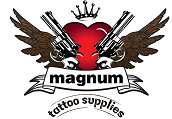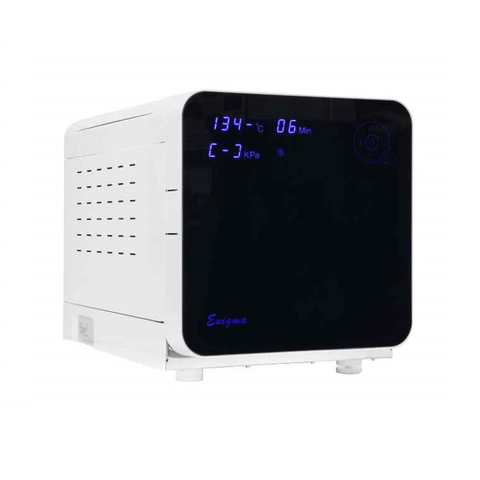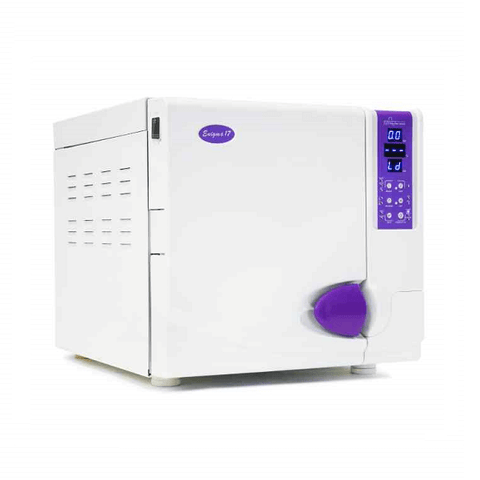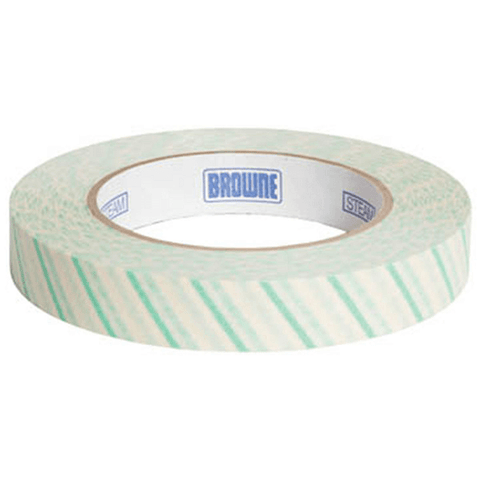Essential guide: How to sterilise tattoo machines safely

Sterilising tattoo machines is a critical yet challenging task for tattoo artists, fraught with the risks of infection and cross-contamination. The machines' intricate parts and constant exposure to blood and bodily fluids make proper sterilisation essential but often overwhelming. Missteps can lead to serious health risks, complicating the artist's workflow and compliance with health regulations.
So, we will simplify the process, offering clear, step-by-step instructions to ensure thorough cleaning and sterilisation. This will help artists protect their clients and maintain a safe, hygienic environment.

Needed tattoo sanitation supplies for tattoo machines
Personal Protective Equipment (PPE)
Cleaning supplies
- Non-corrosive cleaning solutions
- Soft brushes for scrubbing parts
- Paper towels or disposable clothes
- Disinfectant wipes
- Spray bottles for cleaning solutions
Disinfection supplies
- Hospital-grade disinfectants (EPA-approved)
- Alcohol wipes or sprays (70% isopropyl alcohol)
- Ultrasonic cleaner with appropriate cleaning solutions
Sterilisation supplies
- Autoclave (steam steriliser)
- Autoclave sterilisation pouches
- Autoclave tape and indicators
- Cold sterilisation solutions (for parts that cannot be autoclaved)
- Ultrasonic cleaner (for cold sterilisation)
Machine covers
- Plastic bags or sleeves or machine bags
- Clip cord covers
- Disposable grip covers
- Disposable tubes
Sharps disposal
- Sharps containers for disposal of needles and other sharp objects
Drying supplies
- Clean, disposable towels
- Air drying racks or stations

Step 1: Disassemble the tattoo machine
Start by removing all detachable parts from the tattoo machine. This includes the needle, tube, grip, and any other removable components. Proper disassembly ensures that each part can be thoroughly cleaned and sterilised.
Dispose of single-use items, such as needles, disposable grips and other disposable parts, in a designated sharps container to prevent contamination or injury.
Step 2: Pre-cleaning
Rinse the disassembled parts under warm running water to remove any visible blood, ink, or debris. Submerge the parts in a non-corrosive cleaning solution to loosen any remaining contaminants.
Use a soft brush to scrub away any stubborn residue. This pre-cleaning step is crucial as it removes the bulk of contaminants, making the subsequent cleaning and sterilisation steps more effective.
Step 3: Ultrasonic cleaning
Fill the ultrasonic cleaner with an appropriate cleaning solution according to the manufacturer's instructions. Place the parts in the cleaner, ensuring they are fully submerged and not touching each other to allow optimal cleaning.
Run the ultrasonic cleaner for 10-15 minutes. This uses high-frequency sound waves to remove microscopic debris and contaminants that manual cleaning might miss.
Step 4: Rinse and dry
After ultrasonic cleaning, rinse the parts thoroughly under warm running water to remove any remaining chemical cleaning solution. Use a disposable towel or allow the parts to air dry completely.
Ensuring that the parts are completely dry is vital because any moisture can interfere with the sterilisation process, reducing its effectiveness.
Step 5: Sterilisation in autoclave
Place the dried parts in autoclave sterilisation pouches, making sure each pouch is sealed properly. Load the autoclave with the pouches arranged so that they do not overlap, allowing air to circulate freely.
Set the autoclave to the appropriate cycle, typically at 121°C (250°F) for 15-20 minutes, following the manufacturer's instructions. Monitor the cycle to ensure it completes without interruption. Autoclave indicators will confirm whether the items are properly sterilised.
Step 6: Storage and handling
Once the sterilisation process is complete, store the pouches in a clean, dry, and sterile environment until they are ready for use. Always handle sterilised equipment with clean gloves to prevent any chance of decontamination.
Proper storage and handling practices are important for maintaining the sterility of the equipment until it is used.
Step 7: Regular maintenance and record-keeping
Regularly maintain and check your autoclave to ensure it is functioning correctly. Keep detailed records of each sterilisation cycle, including the date, time, and items sterilised. This practice not only ensures compliance with health regulations but also helps trace any potential issues that may happen, ensuring the continued safety and effectiveness of your sterilisation process.

Additional tips
- Cold sterilisation
For parts of the tattoo machine that cannot withstand the high heat of an autoclave, cold sterilisation is a viable alternative. This method involves using ultrasonic cleaners and chemical disinfectants. Immerse the parts in an ultrasonic cleaner with an appropriate chemical cleaning solution, typically for 8-24 hours. While not as effective as autoclaving, cold sterilisation can still significantly reduce the risk of contamination when done correctly.
- Cover your tattoo machine and grip/tube.
Always cover your tattoo machine and grips with plastic sleeves or machine bags during use. This practice helps to prevent initial contamination. Ensure the covers are properly sealed with rubber bands or cohesive bandages. Change these covers between clients and during long tattoo sessions to maintain cleanliness.
- Single-use needles and disposable items
Always use single-use needles and other disposable items. This practice minimise the risk of cross-contamination and makes the sterilisation process more manageable. Properly dispose of these items in designated sharps containers after use.
- Manufacturer's guidelines
Follow the manufacturer's guidelines for both your tattoo machine and sterilisation equipment. Adhering to these instructions ensures that you use the equipment correctly and effectively, maximising the efficacy of your sterilisation process.
- Clean and organised workspace
Maintain a clean and organised tattoo workspace to minimise the risk of contamination. Regularly disinfect all surfaces, including workstations, chairs, and tattoo equipment. Keeping tools organised and properly stored also helps maintain a hygienic environment.
- Health and safety regulations
Stay updated with your local health and safety regulations to comply with industry standards. Review these regulations regularly and adhere to them to maintain a safe working environment. Compliance protects your clients and ensures that your tattoo studio operates within legal guidelines.
Final thoughts
Properly sterilising tattoo machines is vital for the safety of both artists and clients. By following the steps in this guide—cleaning, disinfecting, and sterilising—you can reduce the risk of infection and cross-contamination. Maintaining a hygienic tattoo station environment ensures compliance with health regulations and protects everyone involved. Prioritising sterilisation helps preserve the integrity of your work and ensures a safe tattooing experience.
- Mark Joshua Luz










